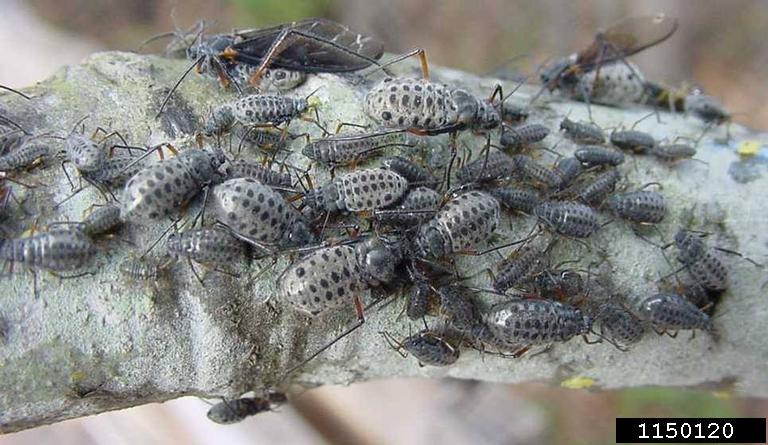Aphids, sometimes called plant lice, feed by sucking sap from their host plant. They come in various forms. Winged, not winged, small, large.
Giant bark aphids are large. They’re found in most states in the eastern half of the country. In Texas, they are present in low numbers throughout the year but occasionally increase in population. Usually during January and February. Outbreaks may persist for four to 10 weeks.
The aphid usually feed on twigs where bark is relatively thin. However, large concentrations may be seen on the trunk of a tree where they can form a mass one foot or more across.
Giant bark aphids prefer water oaks, but other oaks and hardwoods can be infested. They are known to feed on elm, pecan, sycamore, maple, walnut, and willow.

Impacts
On mature trees, their feeding has minimal impact, but on small trees, ones less than 10 feet tall, they may cause stress and dieback.
Their largest impact is honeydew. As they feed, they excrete honeydew, a sticky, clear liquid. This material drops on anything underneath where they feed and can be a nuisance when it forms a sticky coating on cars, picnic tables, lawn furniture, and plants. It’s also attractive to ants, flies, hornets, and yellowjackets.
Honeydew can easily be washed from the surface of these items with water. If not washed though, a gray-black, sooty mold soon begins to grow on the sugar-rich honeydew.
A thick coating of sooty mold on plant leaves can block sunlight and disrupt photosynthesis. Once sooty mold begins to grow, it can also be difficult to remove and damage the finish on cars, chairs, and other objects.
During outbreaks of giant bark aphids, you should avoid parking vehicles beneath infested trees and move or cover lawn furniture and other items where honeydew is falling.
Control
Chemical control is not recommended unless a small, high-value tree is heavily infested.
Natural enemies play a very important role in controlling aphid populations. Lady beetles, lacewings, certain parasitic wasps, birds, and fungal diseases all attack aphids. Without them, giant bark aphids would be much more abundant. When these predators are inactive in January and February is when populations can increase.
An easy, safe, and effective way to remove aphids from a plant is to wash them off with a strong stream of water.
If direct control with an insecticide is warranted, an organophosphate like malathion, acephates like orthene, or insecticidal soap should provide good results. If an insecticide is used, read and follow all label directions for specific information on host plants, phytotoxicity information, safety precautions, and dosage information.